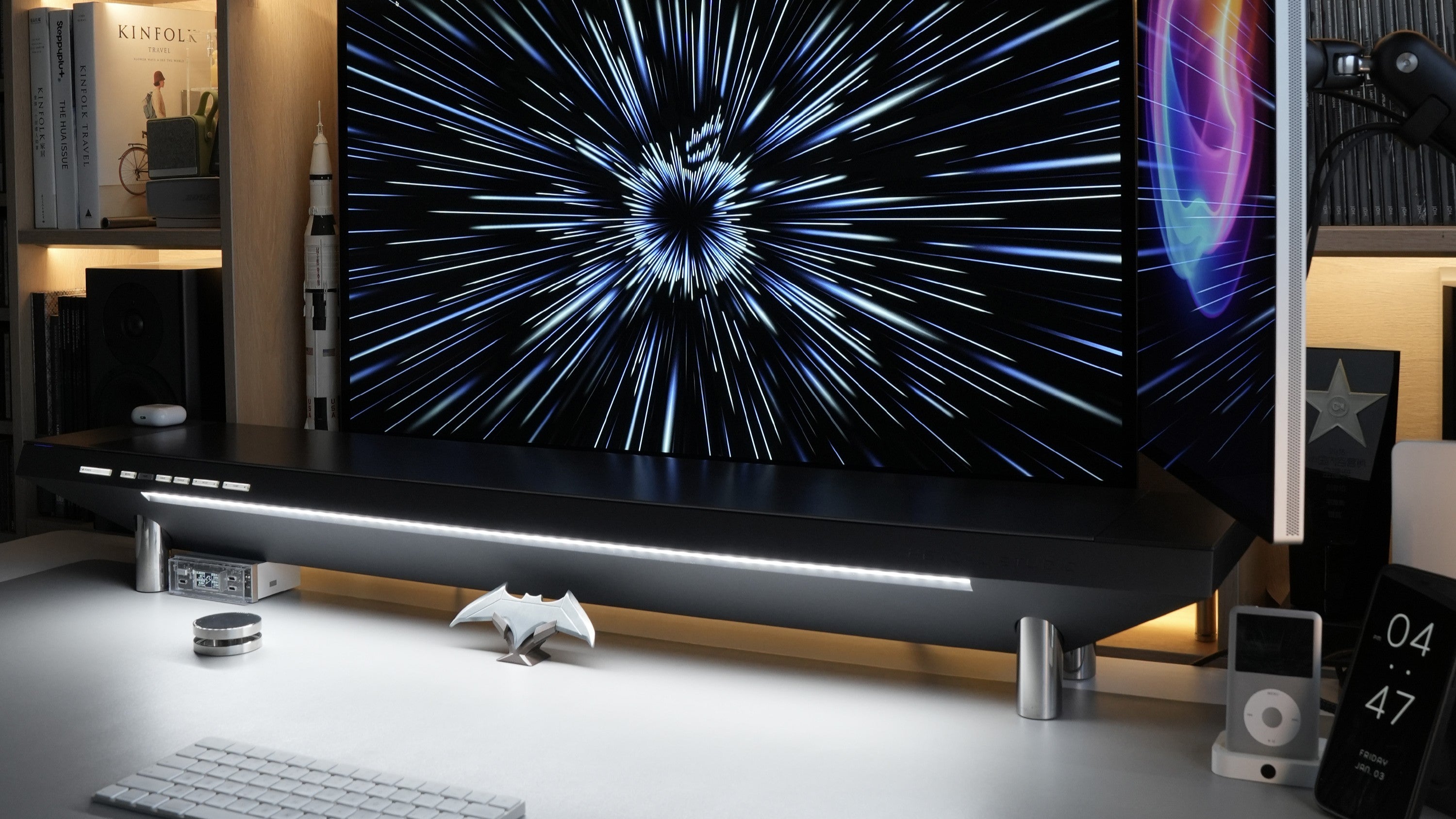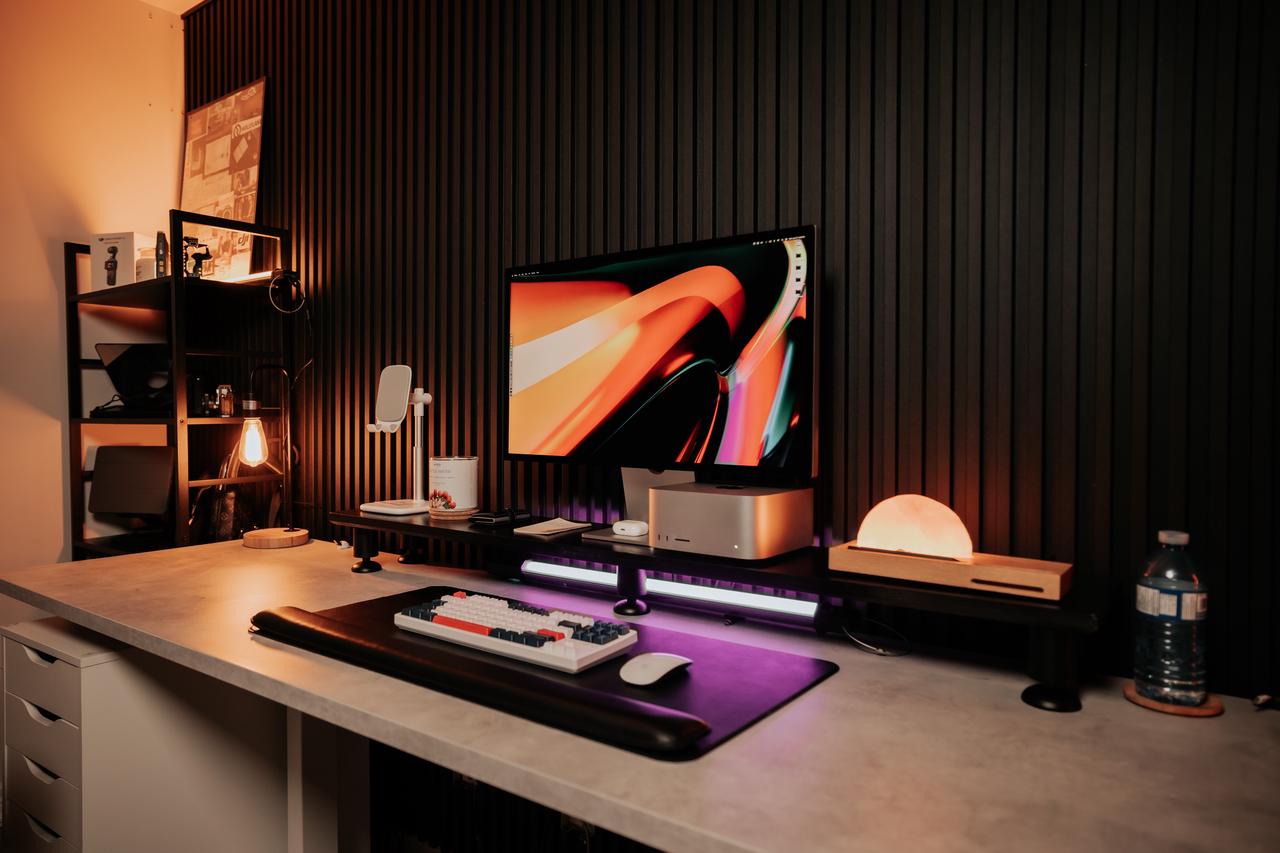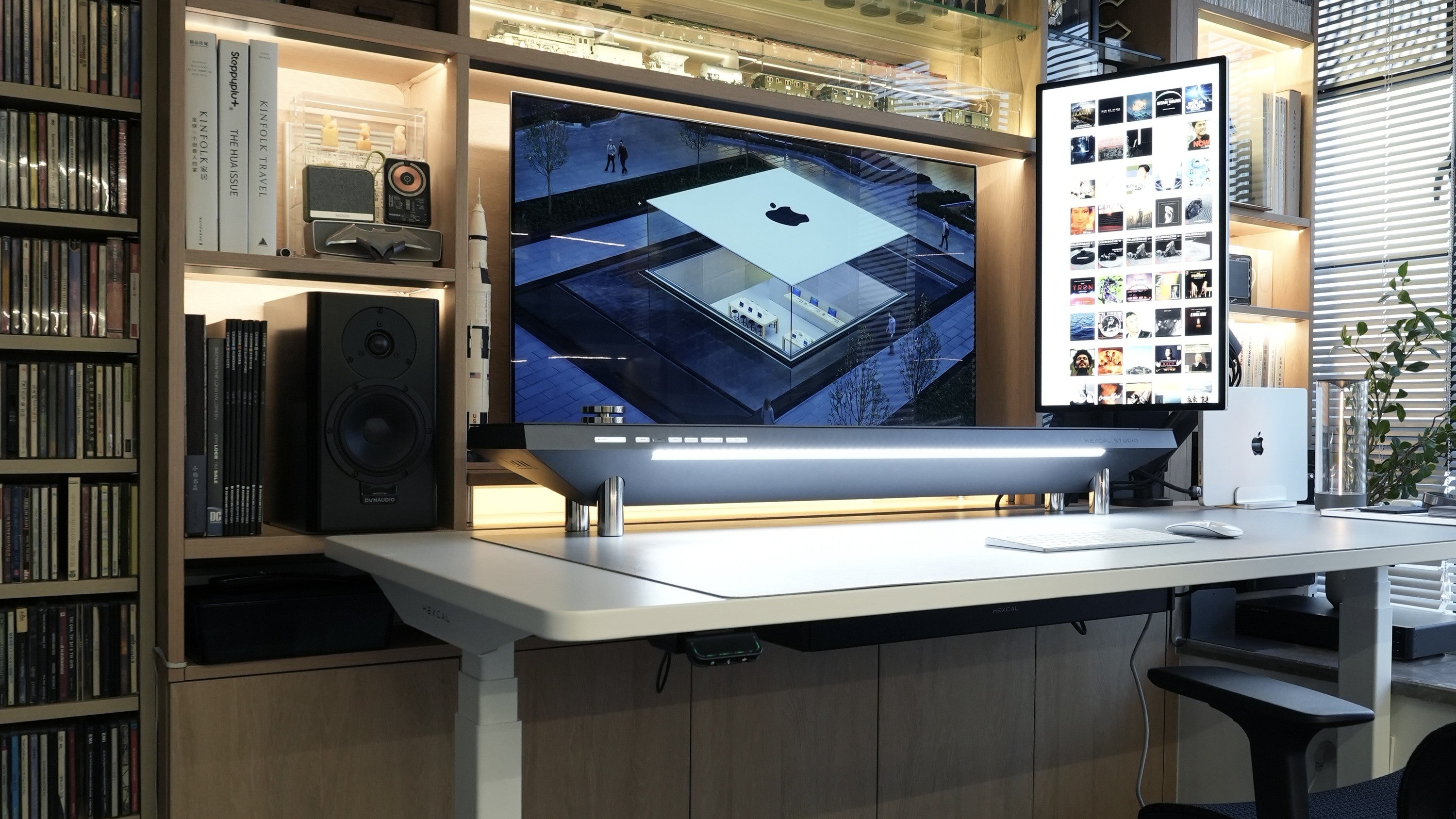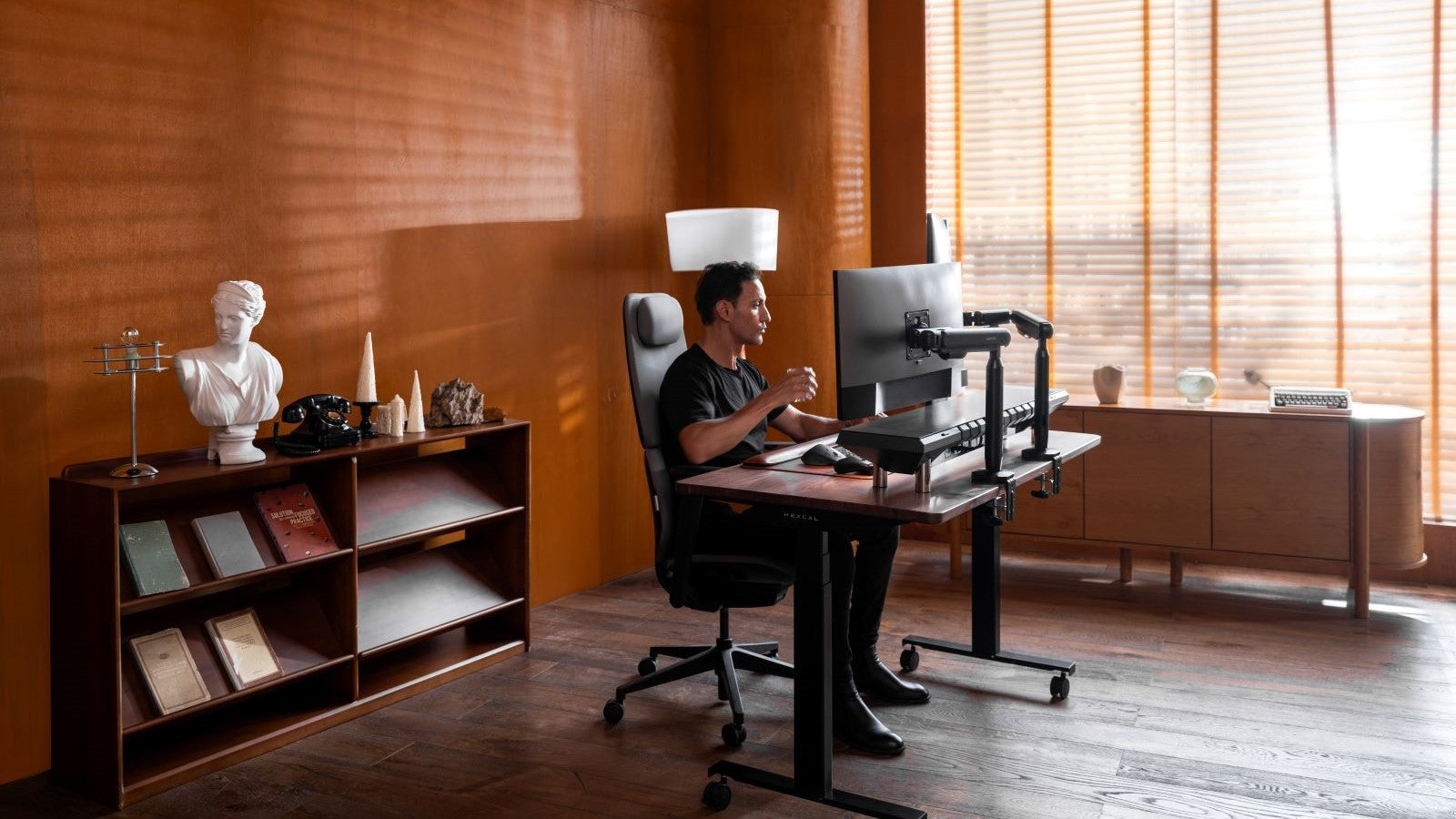Introduction
You've made a smart investment in your health and productivity with a standing desk. However, if you’re still experiencing aches or fatigue, you're not alone. The desk itself is only half the solution; the other half is you. The key to a truly effective standing desk setup is understanding how to use it correctly. This isn’t just about standing up—it’s about creating a dynamic, ergonomic workspace that works with your body, not against it.
This comprehensive tutorial will guide you through the best practices for a healthy and productive standing desk experience, backed by expert insights and our own high-performance design principles.
Why Proper Ergonomics Matter
There’s a direct link between good ergonomics and reduced neck, back, and wrist pain. As the Mayo Clinic and other health experts confirm, proper posture can significantly reduce physical strain on your body. When you position your body correctly, you protect your joints and reduce fatigue throughout the workday.
For a high-performance workspace, ergonomics and design go hand-in-hand. A messy, cluttered desk adds cognitive load, making it harder to focus and maintain a healthy posture. Our approach at Hexcal is to create solutions that are both beautifully minimalist and fundamentally ergonomic.

Setting the Correct Desk Height
The most common mistake new users make is setting their desk too high or too low. Finding your perfect standing height is a simple, two-step process that can prevent discomfort.
Step 1: Set Your Desk to Your Elbow Height
Begin by standing at your desk with your shoulders relaxed and your elbows bent at about 90°, or slightly more. The surface of your desk should be level with your elbows, ensuring your forearms are parallel to the floor. This position keeps your wrists in a neutral, straight position, preventing upward or downward bending that can lead to strain.
Step 2: Position Your Monitor at Eye Level
Next, focus on your screen. Your monitor should be positioned directly in front of you, 20–40 inches away. The most critical part is the height: the top of the screen should be at or just slightly below your eye level.To achieve this precision, a high-quality monitor arm is essential. Our Hexcal Monitor Arm gives you the effortless control to raise, lower, and position your screen precisely, making it easy to find your perfect ergonomic alignment in both sitting and standing positions.
Ergonomic Alignment: Full-Body Positioning
Once the desk is set, focus on your body's alignment.
- Head & Neck: Keep your head aligned directly over your shoulders. Avoid jutting your chin forward.
- Shoulders: Keep them relaxed with your arms close to your body.
- Wrists & Hands: Maintain a straight wrist position, with your wrists kept slightly below elbow height for optimal comfort.
- Lower Body: Keep your feet flat on the floor or a footrest, and your thighs parallel to the floor.
- Under Desk: Ensure the space under your desk is clear for your legs to move freely. A minimalist setup is key to maintaining proper posture. With a clean, organized desk, you can move freely and position your keyboard and mouse perfectly without being hindered by clutter or tangled wires. Our Hexcal Studio and Hexcal under-desk accessories are designed to help you achieve a seamless surface.

Ideal Sit-Stand-Move Ratio
Experts agree that the true benefit of a standing desk comes from movement, not static standing. Just like prolonged sitting, prolonged standing carries health risks such as lower back strain and varicose veins. The key is to alternate your position regularly.
A common best practice is to alternate every 20–30 minutes, spending time both sitting and standing. Use a timer or a dedicated app to remind you. And every hour, take a quick 5–10 minute break to stretch, walk around, or simply grab some water. This continuous movement promotes blood flow and keeps you energized.
Standing Desk Posture Tips
These small adjustments can make a big difference throughout your day.
- Weight: Distribute your weight evenly on both feet.
- Knees: Maintain a slight bend in your knees; avoid locking them.
- Micro-movements: Shift your weight, roll your shoulders, or flex your ankles occasionally to improve circulation.
Keyboard, Mouse & Monitor Setup
Your peripherals are an extension of your body, and their placement is critical.
- Keyboard: Place your keyboard directly in front of you with your shoulders relaxed.
- Mouse: Keep your mouse on the same surface as your keyboard, within easy reach. Use a light touch sensitivity to prevent strain.
- Laptop Users: If you use a laptop, an external keyboard, mouse, and a stand are essential to mimic a proper desktop ergonomic setup. Without these accessories, it’s nearly impossible to maintain healthy posture for long periods.

Accessory Essentials for Comfort
The right accessories can transform your workspace from functional to truly exceptional.
- Essentials: Anti-fatigue mats, monitor arms, and footrests are key. Using a headset for calls can also prevent neck strain.
- Wrist Rests: Use a wrist rest or padded desk edge to prevent contact stress.
- Footwear: Supportive footwear or cushioned insoles can make a big difference, especially on hard floors.
Common Mistakes to Avoid
These are the top pitfalls to look out for:
- Standing all day without breaks. The goal is movement, not prolonged static posture.
- Poor monitor height, which can cause neck strain.
- Leaning on one leg or locking your knees, which can lead to fatigue.
- Ignoring footwear comfort.

Daily Movement Habits
Incorporate small habits to increase movement throughout your day.
- Take phone calls while standing to break up your sitting time.
- Place frequently used items within easy reach to avoid unnecessary stretching.
- Walk to retrieve documents instead of reaching for them from your desk.
Conclusion
Mastering your standing desk is a gradual process. By following these ergonomic alignment and movement tips, you can transform your workspace. Start by building these habits gradually, and over time, you’ll find your desk becomes a source of health and productivity. Ready to take your workspace to the next level? Discover how Hexcal's full line of ergonomic and cable management solutions can help you build the workspace you deserve.





